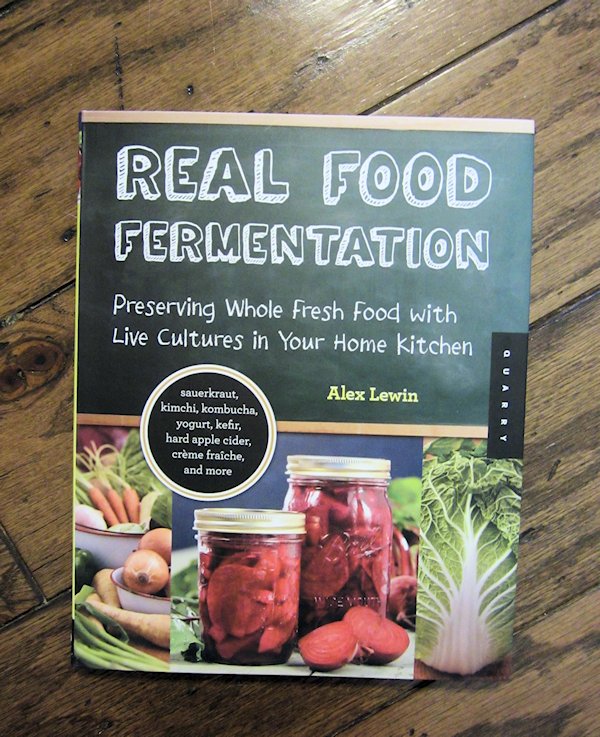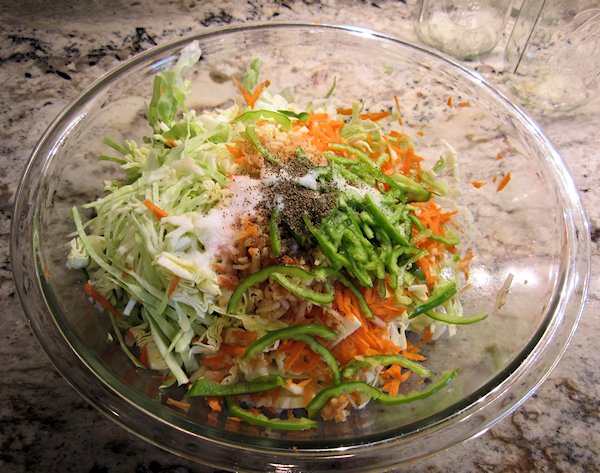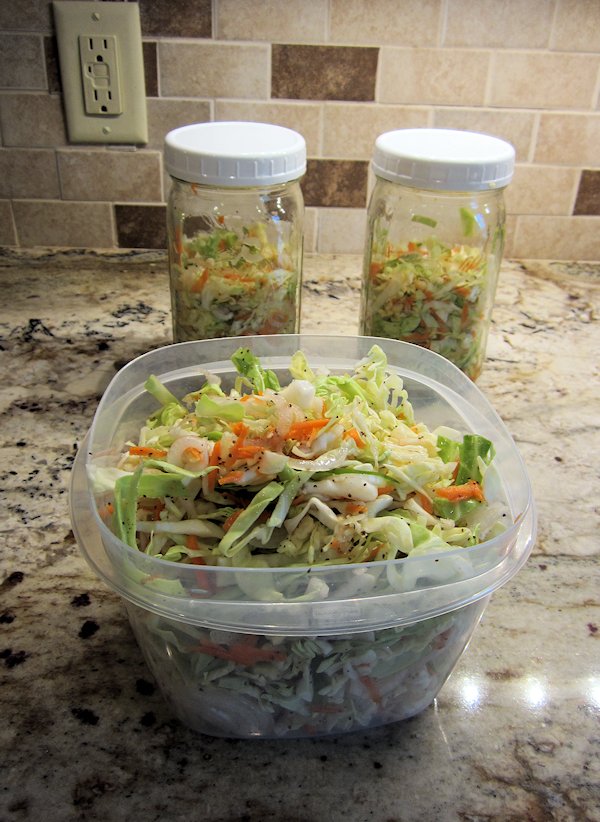For a while now I’ve been wanting to try my hand at fermenting. There’s no particular reason I’ve been wanting to do it . . I just love trying new stuff. I have never even made sauerkraut, which we actually like! I bought some old crocks when we were in MO and planned to make sauerkraut and just never did.
I recently ordered several books about fermenting food and this one is, Real Food Fermentation by Alex Lewin, is the first one I began reading. The first thing I’m making is the fermented Carolina Slaw.
It all looks so good! Once I got it all mixed up and into the jars, I was nibbling on what was left over in the bowl and decided this slaw is so good, I’d make some for tonight! Of course, it won’t be fermented but it will be cold and sour and sweet and it will be delicious!
What’s in the jars will be left to ferment. What’s in the bowl will be served for dinner tonight . . and probably tomorrow too. I can hardly wait to try it after it’s fermented. We love cole slaw and I so rarely make it . . crazy!




Pat says
I am on my way to a meeting where we discuss a more basic life. I am doing part of a program on fermenting foods. I have te Sandor Katz books as well as others but not this one. Do you massage or pound your cabbage with salt to make the liquid that covers it? I will be interested in what you try as always. Hope your eye is improving!
Diana in RR,TX says
I made a lot of “kraut” over before we moved overseas. Still have my big crock. May try it again this year when our little stand gets in cabbage (when the weather cools enough for growing cabbage!) I do have a recipe for making it in jars too. Never tried it though since I had a good crock!
I cheated tho, Mom always used the slaw cutter, I used the food processor! With the cutter we always had at least one sliced finger! But then I did that one day washing the blade for the processor. I was tired and should have waited before washing the dishes. I was lucky our paramedic neighbor worked nights, so he was home when I called. Yes, it was a deep cut!
patti says
hubby has made kraut and kim chi, i don’t eat either! he’s always worried about the bad kind of bugs and his choice of fermenting place is the crock inside a cooler in the unused tub in our bathroom. hardly where the fda would expect/recommend but definitely out of the way for the time it takes to ferment.
JudyL says
I worry about those bad bugs too. In MO, I had the basement and we had the one room that was totally underground and concrete and it stayed cool so I had planned to use that room. Here, I just don’t know where I would do it. I had thought about a cooler in the sewing room . . before Boots resided in there, so now, I’m just not sure where I would make a large batch of kraut.
Helen Koenig1 says
I’ve made sourkraut from both cabbage and chinese cabbage, salted down green beans (which forms a brine – a basis for souring), prepared cucumbers in brine (they are covered in salt – and do ferment – quite good actually – for use in salads), have read of packing soup greens (no greens – just veggies chopped or mashed up and packed in salt – for use in soups), tomatoes – both the whole tomatoes uncooked (you do use a little vinegar along with the salt)aswell as the naturally preserved tomatoes (salt, no vinegar – this one I like!), uncooked tomato concentrate (untried). Have wanted to try corn, salted dandelions, rutabagas (or white turnips – although it seems to me ANY turnips should do!).
The salt concentration is heavy enough that it should prevent any form of bacterial growth (probably more so than you would get in freezing – where bacteria DO and CAN grow – VERY SLOWLY). The salt pulls the moisture from the vegetable and makes its own brine.
Some veggies NEED brine because the moisture content is low enough that you would have problems pulling enough moisture out. So those you brine with a very heavy salt concentration.
Souring or fermenting or sauerkraut veggies you are hoping for some bacterial formation – but only of a certain type and the souring will produce a brine that is not only salty – but somewhat acidic – so you are using only a tenth of the amount of salt you use for preservation mentioned above. Temperature is important – too cold, and fermentation doesn’t occur, so you might get undesired bacteria and spoilage. Too hot and you kill the desired fermenting bacteria. So 68-72 F is best. (keeping the veggies in the bathtub wasn’t really a bad idea – re temperature! Still and all – in the bathroom????) Don’t mix a new batch with an old one. Keep them separate. Skim daily (starting the second day) to remove fermenting scum, and replace plate (or weights) and cheesecloth at that time. When bubbles stop – fermentation has stopped. Clean the inside around the top of the container, cover again – clean lid, and put a close fitting lid on – THEN store in a cool place around 38F. Some folks can at this point.
Re brining – you CAN brine green peppers, cauliflower and onions as well – curing here takes 4-5 weeks and you have to periodically add salt. (info gathered from Rodale Press’ “Putting Food By” and my own personal experiences from it)
Twyla says
My mother did the crock method and it was good. But, the best was when she put it in jars and had shred it to a small size. It was a milder version of sauerkraut.
patti says
probably should’ve clarified that the toilet is in a separate room from the tub as is the stall shower… we want only the good bugs!